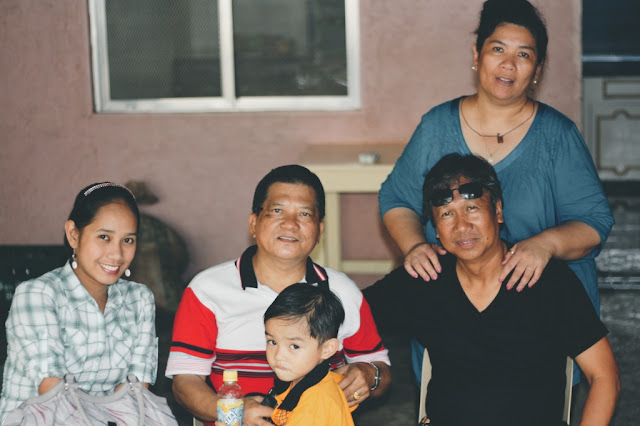Covering a wedding event offers a valuable opportunity, especially for those interested in photography. In this article, I will detail my initial experience with wedding photography using the Canon EF 50mm f1.8 lens. I was not the official photographer for this event, so some of my photographs may not primarily focus on the couple and include various candid shots. The photographs were captured using a DSLR Canon EOS 1000D camera with a Canon EF 50mm f1.8 lens. The event was my cousin's daughter's wedding. They had hired an official photographer, and I was there to gain experience. At that time, I was not yet familiar with the operational procedures of wedding photo sessions.
Creating a photograph with
background blur has been an enduring objective of mine. My aim is to capture
images that clearly differentiate the subject from the background, producing an
extraordinary photograph. The Kit Lens 18-55mm f3.5-5.6 does not satisfy my
requirements; therefore, I am interested in acquiring a 50mm lens. According to
my research, the 50mm lens, commonly known as the "nifty fifty," is
capable of achieving an impressive background blur effect. Upon obtaining the
lens, I consistently carried it with me to evaluate its performance and
quality. When my cousin invited us to her daughter’s wedding, I brought my
camera and 50mm lens to capture moments throughout the event.
 |
| Canon EOS 1000D 50mm f/1.8 1/60sec ISO 400 |
From the image above, it is evident that the background
appears rather blurry. However, as this lens is a 50mm lens, I find it too
restrictive. Furthermore, I was unable to move backward any further due to the
large number of people behind me during the event.
 |
| Canon EOS 1000D 50mm f/1.8 1/50sec ISO 400 |
This photograph was captured
using a Canon EOS 1000D paired with a 50mm f1.8 lens. The shallow depth of
field effectively highlights the subject by creating a blurred background. It
should be noted that the eyes are not sharply in focus due to the Canon 1000D's
lack of eye or face detection capabilities. Furthermore, the ISO setting was
not increased, which would have permitted a higher shutter speed and resulted
in a sharper image. Despite these factors, the photograph maintains visual
appeal when observed from a distance.
Although this image may not have
a significant impact on viewers, I would like to share it because I appreciate
the blurred background produced by the 50mm f1.8 lens. This effect makes the
subjects appear as if they are floating or popping out from the photograph.
 |
| Canon EOS 1000D 50mm f/1.8 1/80sec ISO 400 |
I have the opportunity to capture
a photograph of the bride while the official photographers are occupied with
directing and capturing other moments. However, there are numerous individuals
surrounding her, making it challenging for me to find an ideal position to take
a clear shot. Thanks to the official photographers' lighting, I achieved a
slightly higher shutter speed of 1/80 at ISO 400. I am hesitant to use higher
ISO settings due to the potential noise that may be produced by my Canon EOS
1000D camera.
The blurred background in this
image is remarkable. I appreciate how this lens achieves such blurriness,
allowing the subject to stand out clearly in photographs. Previously, my wife
observed that my photos often focus too closely on the subject, neglecting the
ambience or background in many of my shots. Currently, I am considering
acquiring a 17mm f1.2 PRO lens from Olympus for my Lumix G85, with the goal of
capturing both the subject and the background ambience with slight blurriness
to enhance the detail in my photographs.
 |
| Canon EOS 1000D 50mm f/1.8 1/25sec ISO 400 |
As demonstrated in the image, one
subject is clearly in focus, whereas the child's face appears slightly blurred.
I have found that when photographing multiple people, it is not always
necessary to use a wide aperture. This can result in some subjects appearing
blurred, particularly if the photographer is close to them. A wide aperture
creates a shallow depth of field, meaning only a small portion of the image
will be in focus. This effect is more pronounced when the subjects are at
different distances from the camera. However, maintaining a wide aperture can
be beneficial if there is sufficient distance from the subjects, as it allows
for sharpness throughout the entire image. The depth of field increases with
distance, making it easier to keep all subjects in focus.
 |
| Canon EOS 1000D 50mm f/1.8 1/30 sec ISO 400 |
In contrast to the previous image,
the three subjects are in focus, though the overall sharpness is not optimal due
to the slow shutter speed of 1/30 seconds, which makes the capture prone to camera
shake without steady handling. The primary issue with this photograph is my
failure to increase the ISO to at least 800 or 1600, as I was concerned about the
introduction of digital noise. However, one aspect I particularly appreciate
about this photo is the impressive background blur.
In this article, I have evaluated
the shallow depth of field quality produced by the Canon EF 50mm f/1.8 lens. I
particularly miss the bokeh effect from my Canon EOS 1000D, which features an
APS-C sensor larger than that of my current MFT system. Achieving similar
results with the Lumix G85 has proven to be somewhat more challenging. I aim to
obtain professional lenses from an MFT system that provide bokeh quality
comparable to that of APS-C or full frame sensors.
Thank you for taking the time to
read this article. If you would like to view additional photos related to this
article, please visit the link provided here: Joemen Bayan -Aala-Mendoza Wedding (Sept 24, 2011)


Comments
Post a Comment
Could you share your perspective on this article?